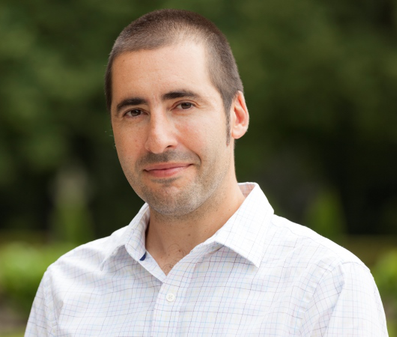Emerson Professor Leads National Study on Impacts of Media Literacy

At a time when media—especially digital and social media—is more prevalent than ever in our society, our ability to understand and navigate it (known academically as “media literacy”) is more important than ever for a functioning, just, and equitable democracy.

Such are the findings of the largest-ever study of media literacy practices, titled “Mapping Impactful Media Literacy Practices.” Emerson College’s Paul Mihailidis was a co-lead investigator of the U.S. portion of the $250,000 international research effort, which was sponsored by the National Association for Media Literacy Education, and funded by a lead grant from Facebook.
As Mihailidis explains, media literacy is just as vital at a community level as on a regional or national scale, if not more so.
“In the context of media literacy practices, how we use media to be engaged in communities can define the health and strength of the community spaces we inhabit,” says Mihailidis, who serves Emerson as assistant dean of the School of Communication, a professor of journalism and director of the Media Design graduate program.
“Whether an online community forum or a group working on environmental health, how we use media to build deep spaces for care, dialogue, and trust matters. This means not only exploring how media impacts community well-being, but also how media can be used to build stronger, better, and more connected communities.”
Over the course of a year and the expanse of the United States, the research team studied how to define and measure the “impact” of media literacy, the teaching practices and processes that create impact, and the challenges and opportunities for incorporating principles of equity into those practices.
As the researchers note in the report’s executive summary, findings from both in-depth interviews and a quantitative survey of more than 700 media literacy practitioners “indicate the urgency for media literacy to be implemented as a core educational standard, especially in light of the events of the Jan 6, 2021 insurrection in the U.S. Capitol in Washington, D.C. and the worldwide #BlackLivesMatter uprisings after George Floyd’s murder in May 2020.”
In contrast, the survey “also captures the challenges that many practitioners face with incorporating topics related to equity and social justice within their communities and classrooms.” That finding led the team to create a field guide to help practitioners learn and apply their work, especially as it relates to equity and impact.
“If media literacy doesn’t address equity,” says Mihailidis, “then it will further exacerbate the structural inequities we see economically, socially, and civically. True media literacy practice focuses on human connection and supporting people in the most marginalized of communities. That pathway leads you to the most vibrant social initiatives, more human connections, and the ability to support equitable and just futures. And that’s what we’re hoping to do—help restore our democratic infrastructure.”
In Mihailidis’s 15-plus years of media literacy research, this project is the most expansive. “To do a national research project of this scope has been such a wonderful opportunity and it’s allowed me to stop and look back on the work I’ve done. It has also helped me to think more concretely about how I’ve seen media literacy impact and work be received in a community.”
He is quick to acknowledge and thank co-researchers, who were supported by an advisory group and design team, as well as research partners in Australia who conducted a similar study. “The team was pretty amazing and super collaborative. My co-principal investigators are just really strong professors and people. Graduate students did so much of the data analysis and work and were really with us every step of the way. I’ve made wonderful friends and colleagues.”
Mihailidis also expresses his appreciation for Emerson College’s support of the study. “When you’re an academic and get the opportunity to lead big national research projects, you hope it can be a reflection of your institution. Emerson has been really supportive of this, of giving me the time and space to do this. You can’t ask for more from your insitution than for them to support your research priorities.”
The group’s research and advisory partners include major college research alliances nationwide, including all of the large 11 social studies councils, the National Council for Teacher Education, and the Journals of Education Association. “This puts Emerson on the map for America’s K-12 student populations.”
Categories